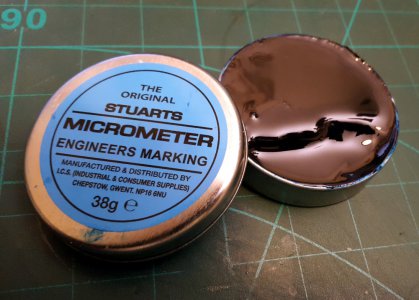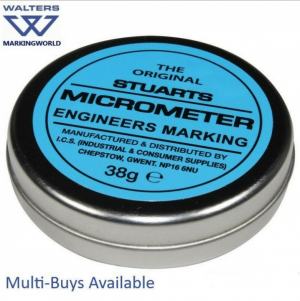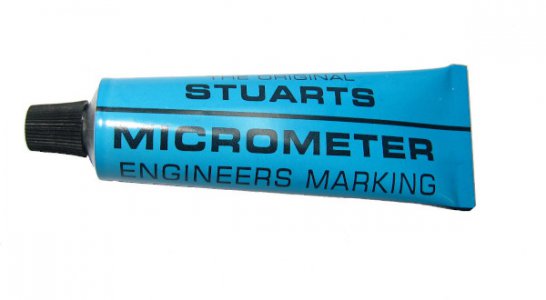Marking Blue Blues
I had not thought I would have more to say about the can the marking blue comes in, but I change my mind. Originally it was about the lack of easy access. Getting the can open - somehow.
In all of this attempt, we keep in mind the 38grams of blue in a can, gets it to 65grams total, and the forces one must apply to the slippery thing far exceed that. The control of said forces will involve a muscle-driven response to a high value transient when the darn lid lets go!
Let us temporarily forgive all that. When the can is finally levered open in a mad scene involving biggest pipe-grip plumbing pliers, and small(ish) screwdrivers, this is what we have!

There is blue-goo all the way around the outside where the lid contacted the lower part. Wiping it away is messy, and tricky, and lightweight can is prone to tip, skid, topple, and in other ways deposit some of the blue, brimming from the top. Good that one gets "a whole 38grams", but don't count on on using it all!
Not shown is what goes on underneath the cap. A huge blob of blue, stuck there, just like it would on the lid of a paint can recently shaken. How to deal with it. It has a long drip wobbling under it. Getting the content under the lid to go back into the space within the can from whence it came is a whole new situation! Said situation will be repeated with perhaps worse variations not yet speculated.
This receptacle, for what it holds, and how it is expected to be used, is just not fit for purpose! Maybe if I persuaded most of the blue goo into a plastic syringe, things might be under more control. I know a little goes a long way, but so far, not as much as a nanogram has made it to a surface plate. I do, however, have several blued-up paper towels in my wastebin, only one of which was useful in actual contact with the tin can!







